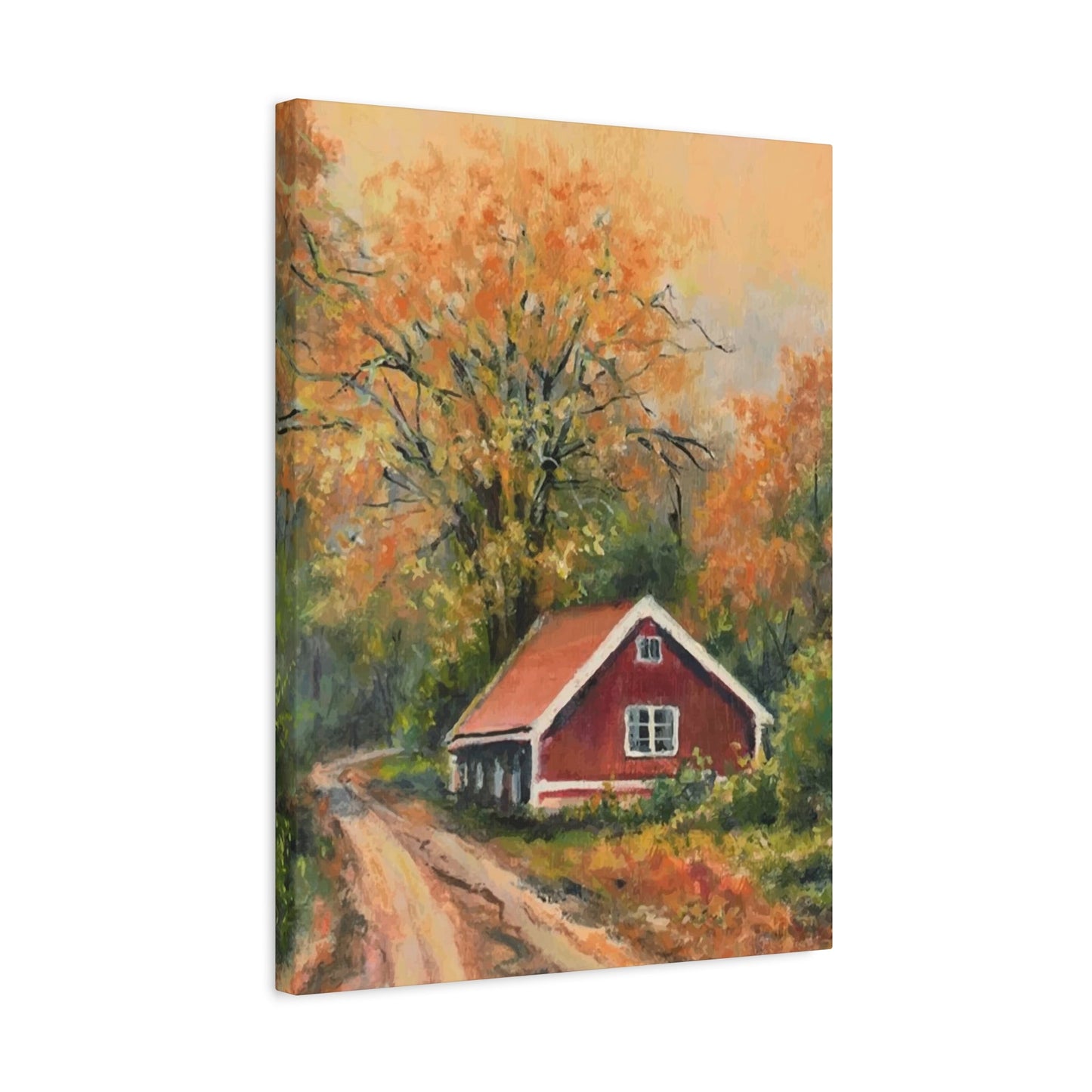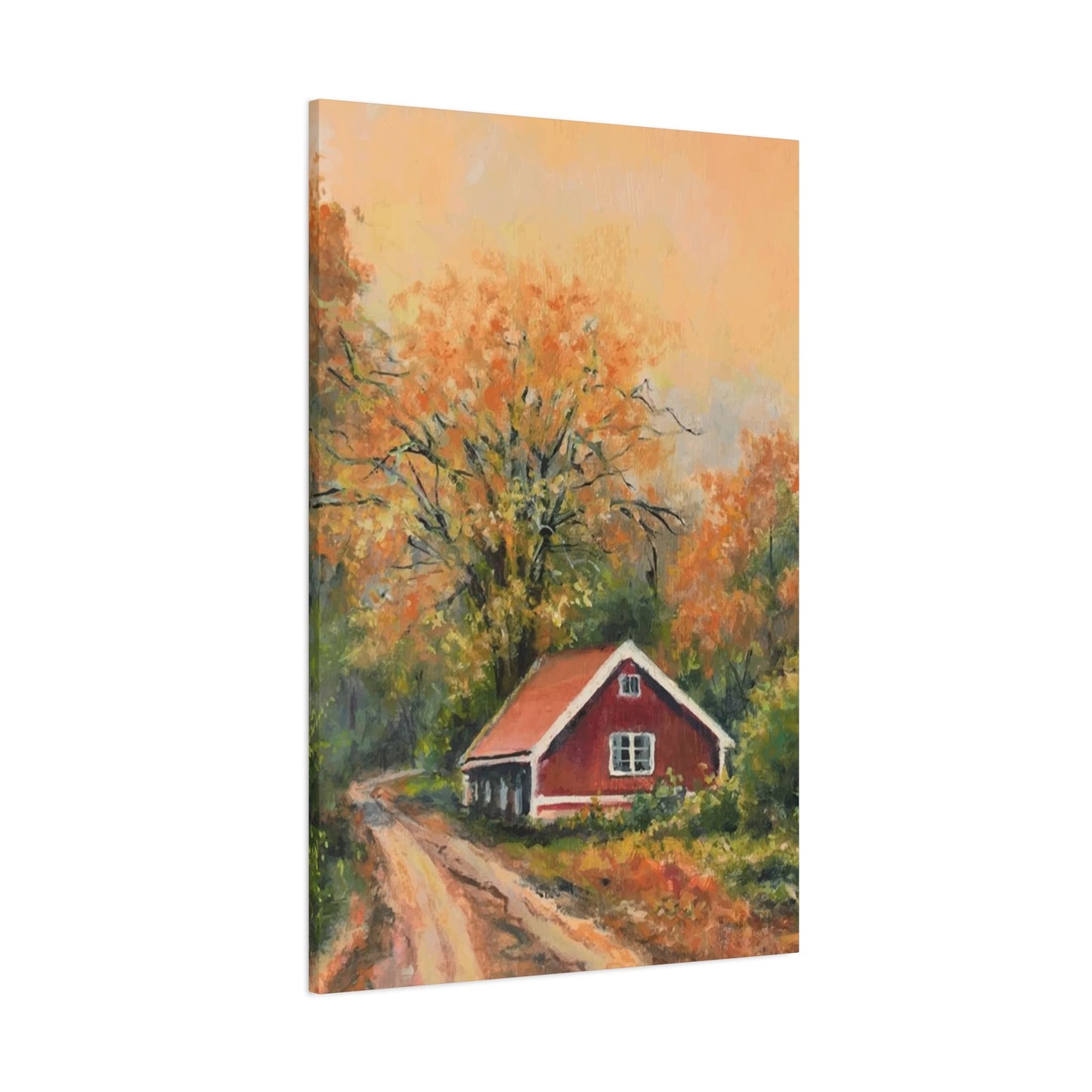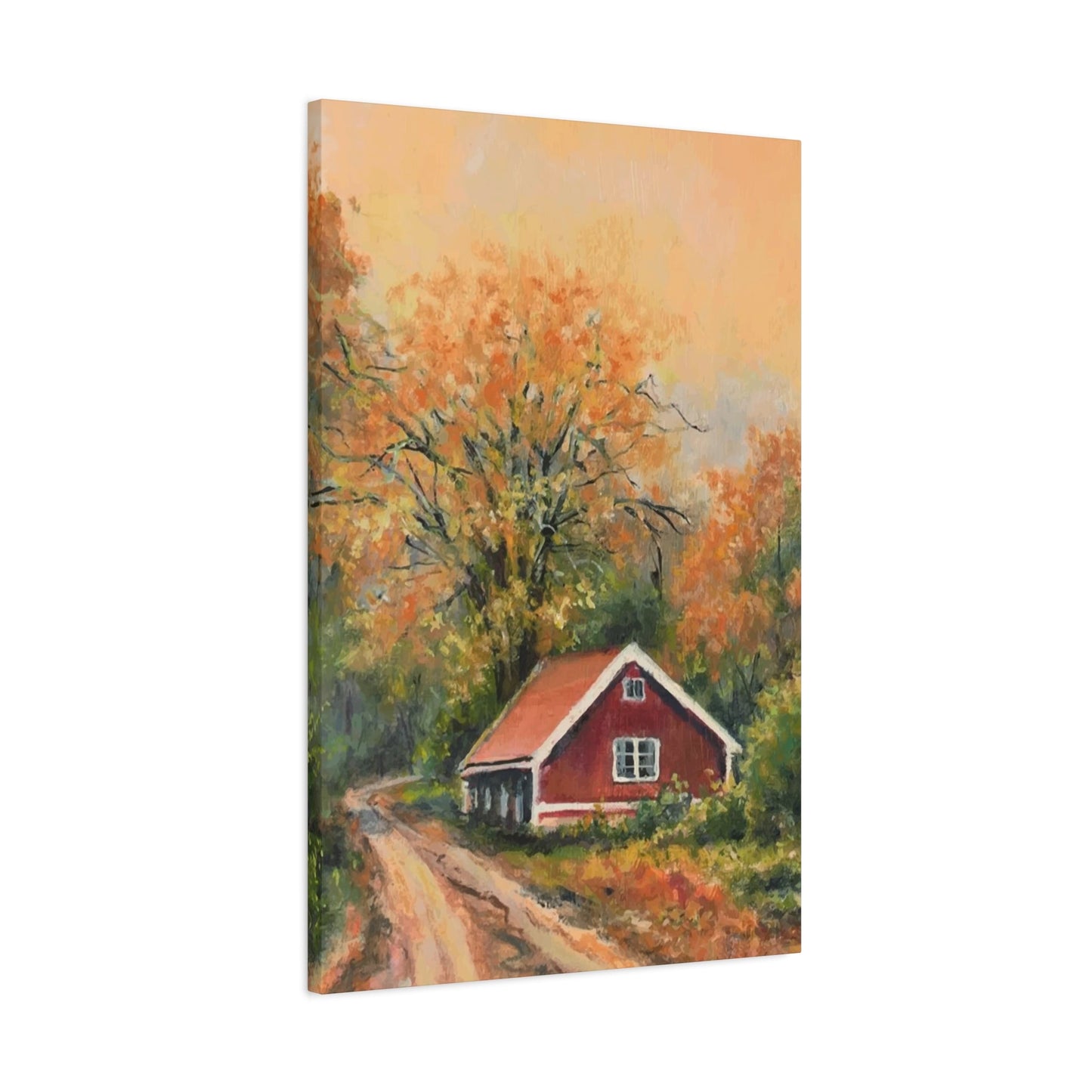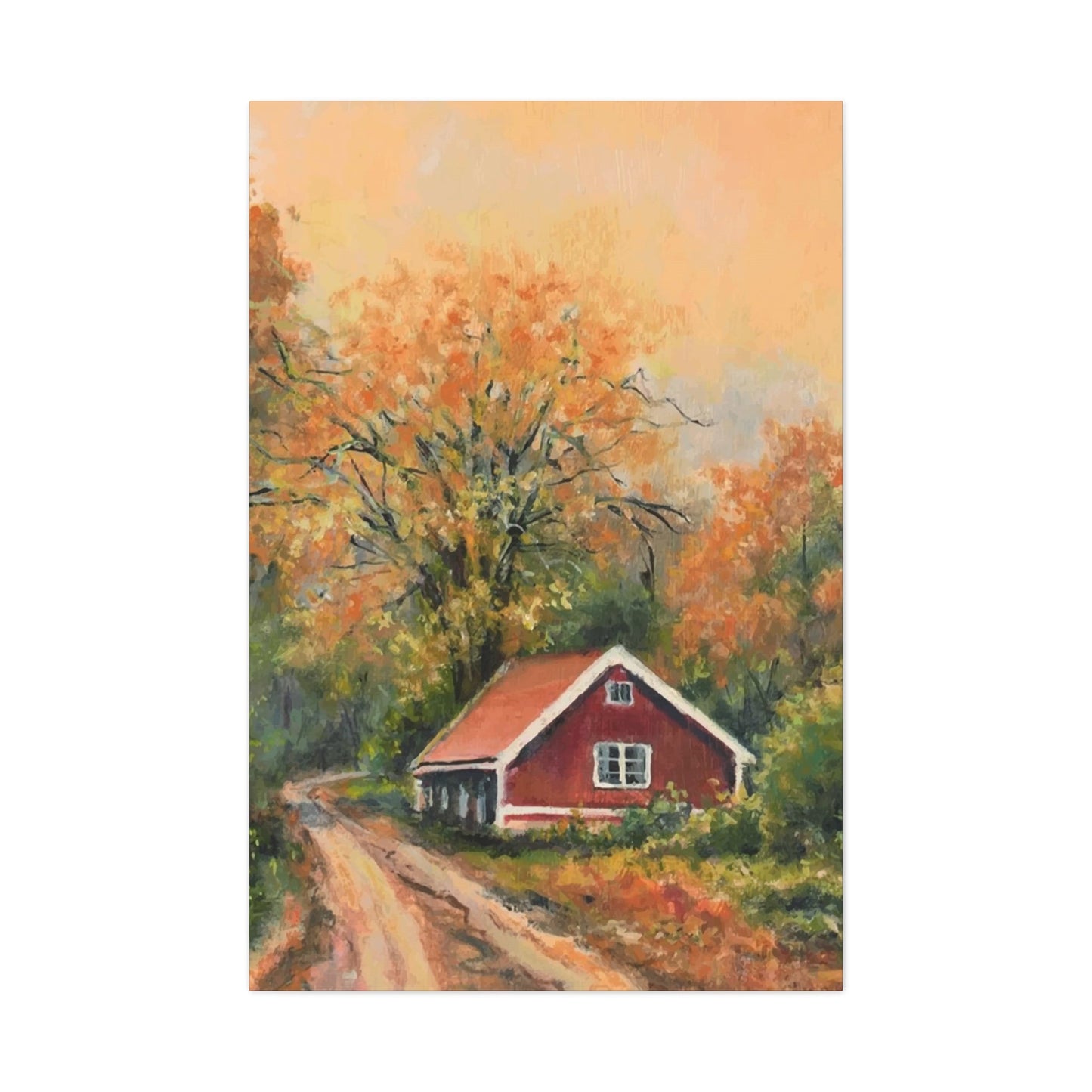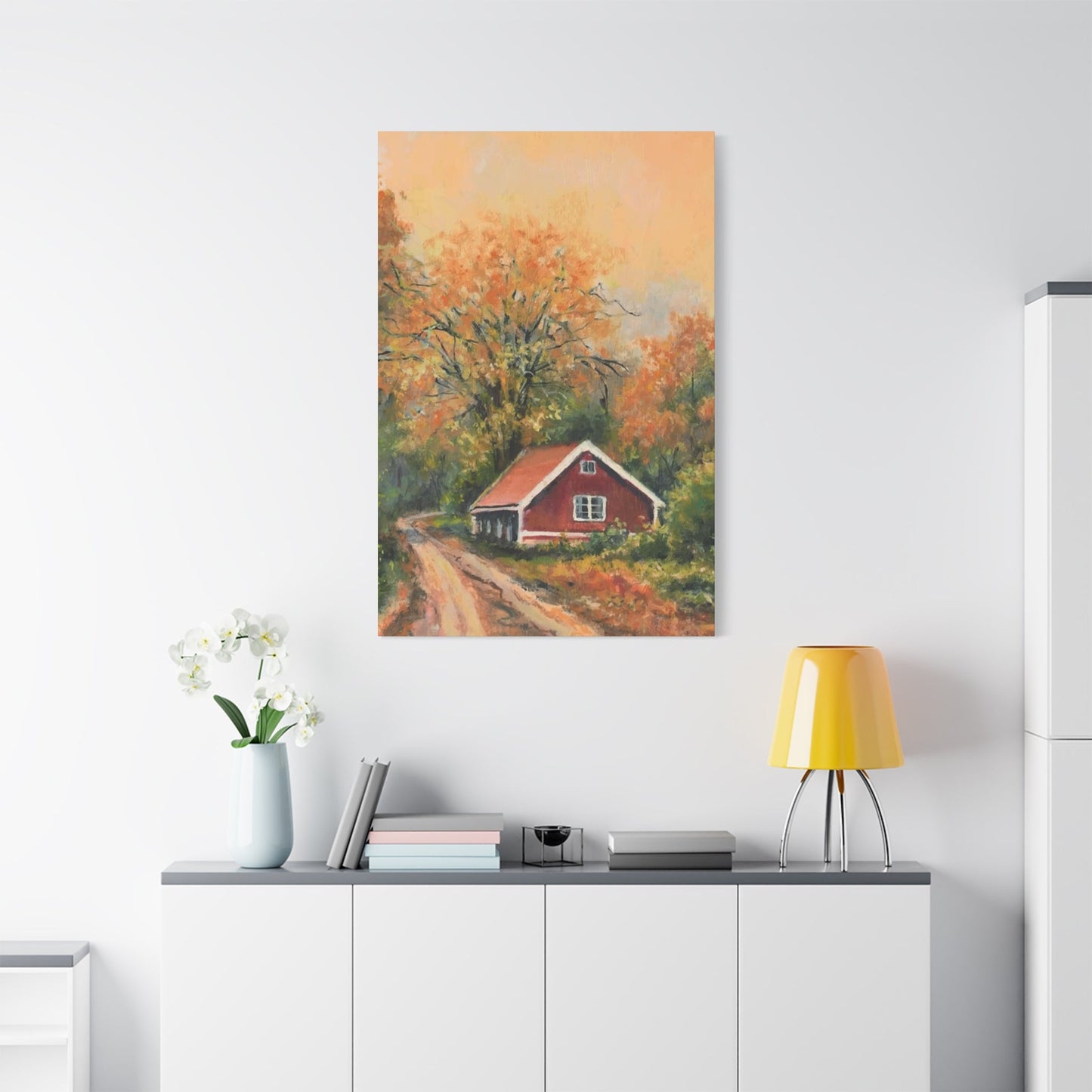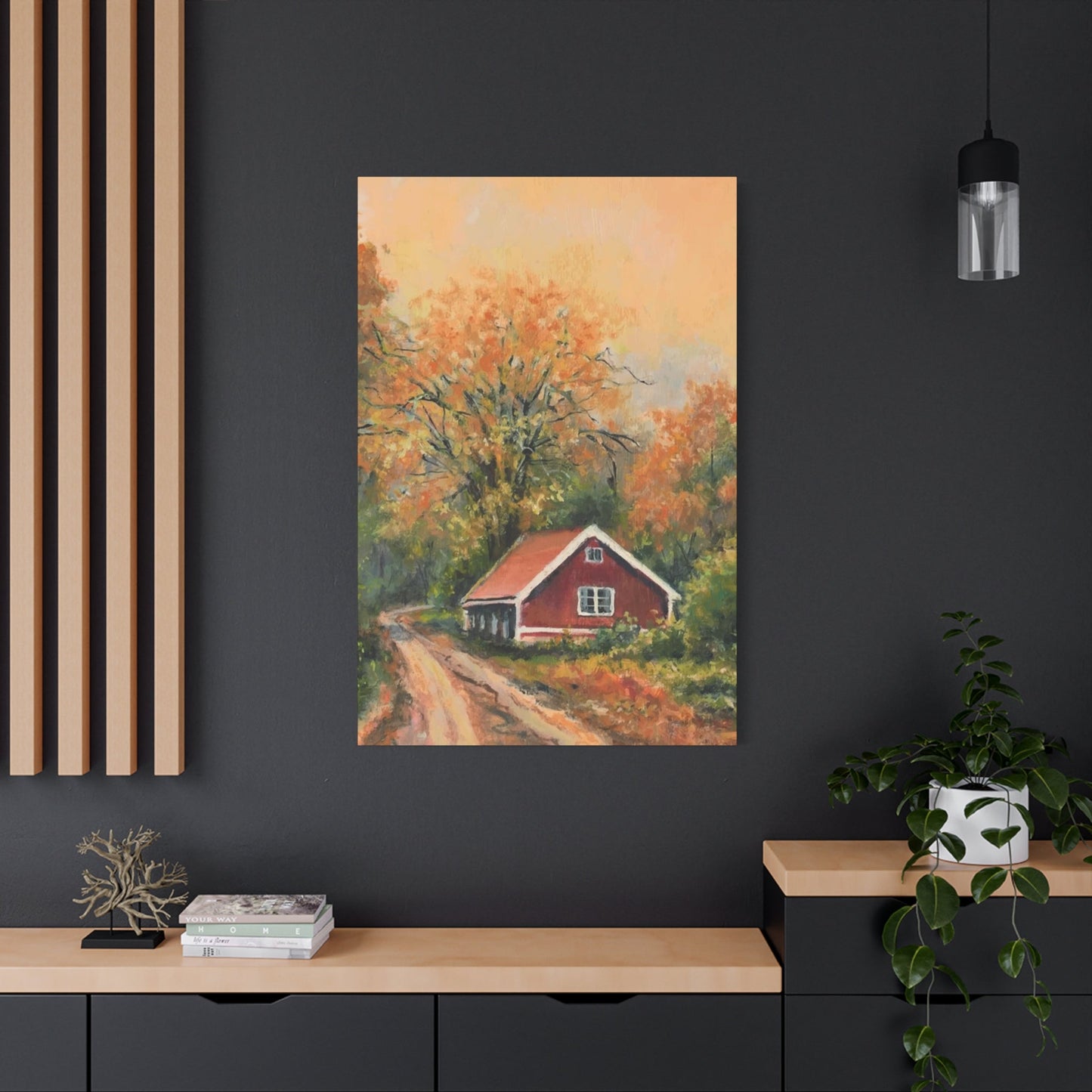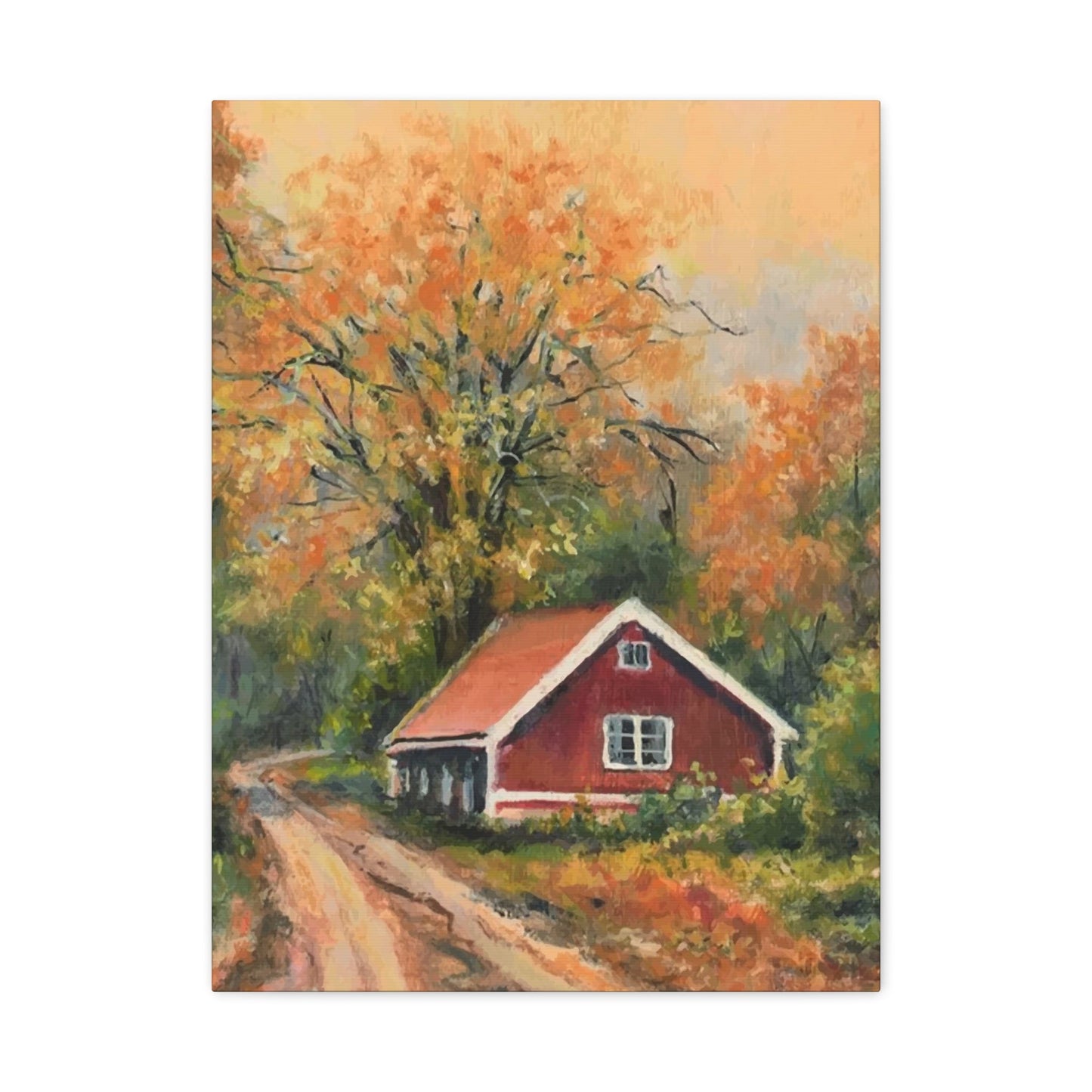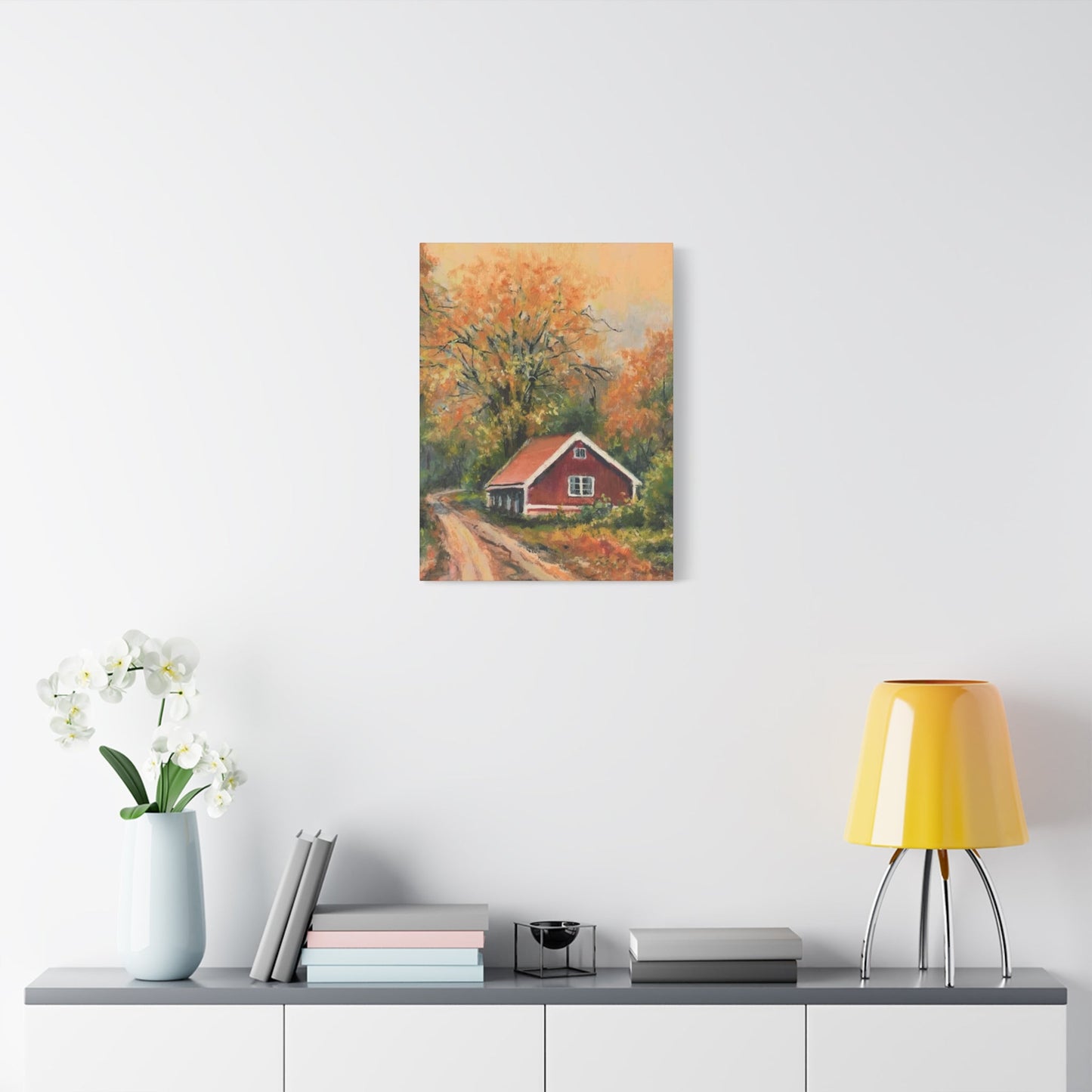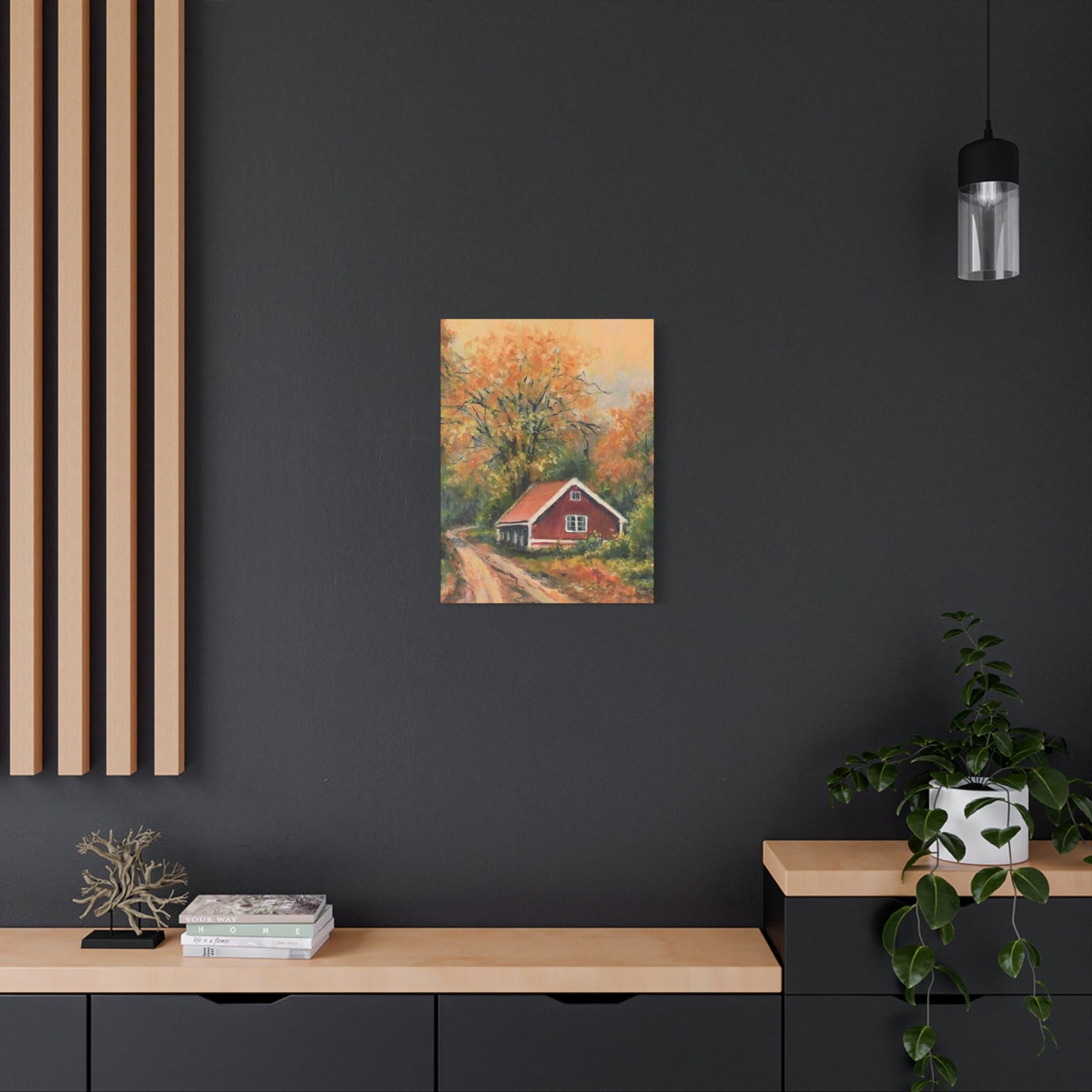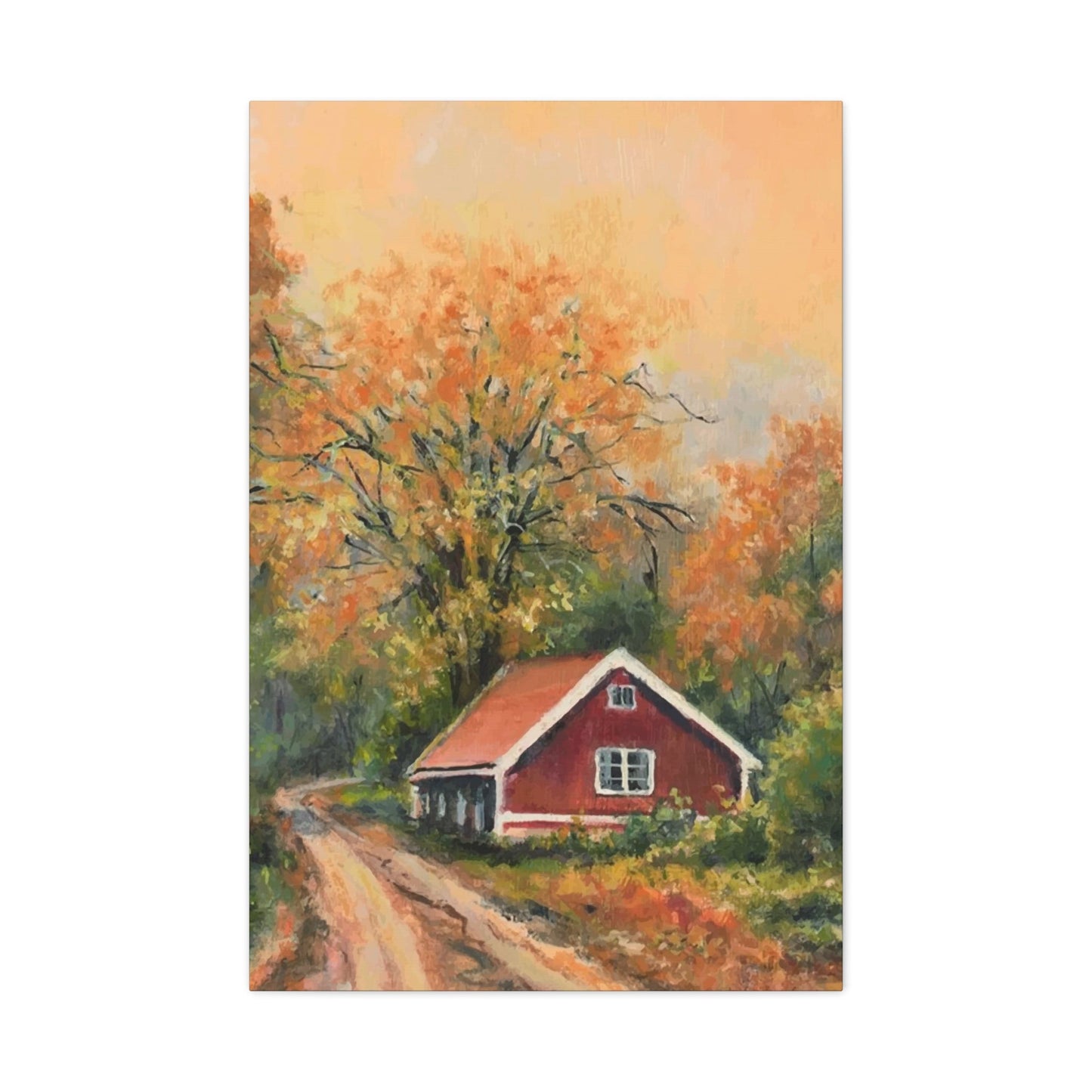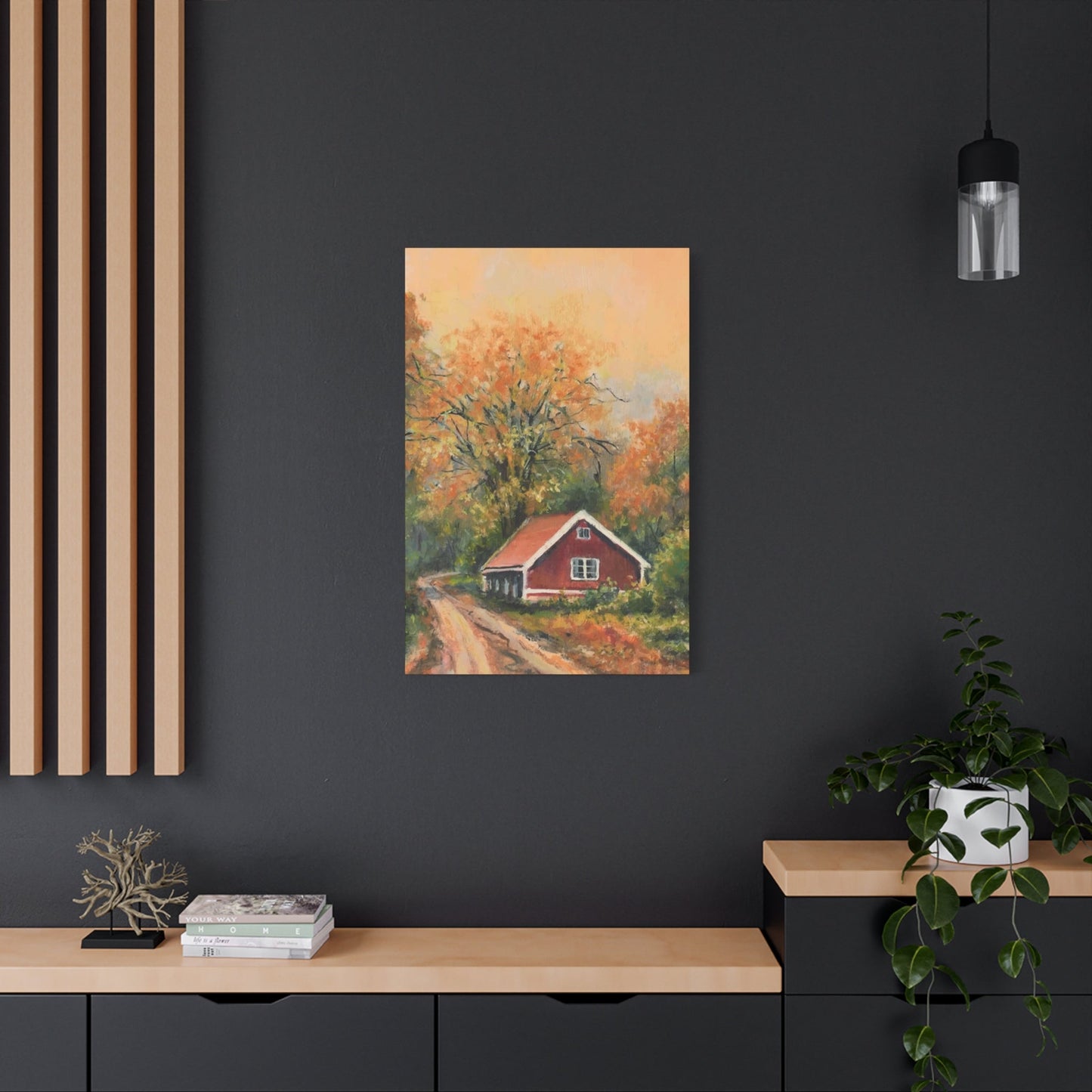Farmhouse Wall Art: Creating Warmth and Character in Every Room
Creating a warm, inviting atmosphere in your home starts with selecting the right wall art that reflects your personal style and values. Farmhouse canvas art has emerged as one of the most beloved interior design trends, offering homeowners a perfect blend of rustic charm, modern functionality, and timeless appeal. This comprehensive exploration delves into the world of farmhouse-style canvas prints, examining how these decorative elements can transform any space into a cozy sanctuary that celebrates the beauty of rural life and countryside aesthetics.
The popularity of farmhouse decor stems from its ability to create spaces that feel both lived-in and carefully curated. Unlike other design styles that may feel cold or intimidating, farmhouse canvas art invites viewers to relax and feel at home. These pieces often feature muted color palettes, natural textures, and imagery that evokes memories of simpler times when life moved at a slower pace and family gatherings took place around kitchen tables laden with home-cooked meals.
Canvas prints offer several advantages over traditional framed artwork, particularly in farmhouse-style interiors. The fabric texture of canvas naturally complements the organic, handmade feel that defines this aesthetic. Additionally, canvas prints are more affordable than original paintings while still providing the visual impact and artistic presence that can anchor a room's design scheme. They're also lightweight and easy to hang, making them accessible to homeowners who want to redecorate without major renovations or professional installation.
When selecting farmhouse canvas art, consider how each piece will contribute to the overall narrative you want to create in your space. The best farmhouse interiors tell a story through carefully chosen decorative elements that work together harmoniously. Whether you're drawn to pastoral scenes that celebrate agricultural life, botanical prints that bring nature indoors, or vintage-inspired designs that honor traditional craftsmanship, each canvas should feel like a natural extension of your home's personality.
The versatility of farmhouse canvas art makes it suitable for every room in the house, from formal living areas to intimate bedroom spaces. In open-concept homes, these prints can help define different areas while maintaining visual continuity throughout the space. The neutral color palettes commonly found in farmhouse art make it easy to incorporate these pieces into existing decor schemes without overwhelming other design elements.
Countryside Canvas Collections That Define Rustic Sophistication
The foundation of any successful farmhouse interior lies in understanding the key elements that define this beloved design style. Rustic chic canvas prints embody the perfect marriage between rural simplicity and refined taste, creating artwork that feels both authentic and polished. These pieces often feature weathered textures, vintage-inspired imagery, and color palettes drawn directly from nature's most beautiful landscapes.
Rustic chic canvas prints typically incorporate elements such as distressed wood textures, aged metal finishes, and soft, muted colors that create a sense of timeless elegance. The beauty of this style lies in its imperfection – the slight irregularities and worn edges that suggest a piece has been loved and lived with over many years. This aesthetic celebrates the beauty found in everyday rural life, from weathered barn doors to wildflower meadows swaying in the breeze.
The color palette of rustic chic canvas prints tends to favor earth tones, soft grays, creamy whites, and muted blues and greens. These colors work beautifully together and complement the natural materials commonly used in farmhouse decor, such as reclaimed wood, wrought iron, and vintage textiles. The result is a cohesive look that feels intentional yet effortless, sophisticated yet approachable.
Texture plays a crucial role in rustic chic canvas art, with many pieces featuring layers of visual and implied tactile elements. Artists often incorporate techniques that mimic the appearance of aged wood, cracked paint, or weathered stone, creating prints that look as though they've been discovered in an old barn or country estate. This attention to textural detail helps bridge the gap between fine art and rustic decor, elevating simple subject matter into sophisticated design statements.
The imagery found in rustic chic canvas prints often celebrates the simple pleasures of country living. Common themes include pastoral landscapes with rolling hills and wooden fences, vintage farm equipment arranged in artistic compositions, and close-up studies of natural materials like weathered wood grain or stone textures. These subjects resonate with viewers who appreciate the honesty and authenticity associated with rural life, even if they live in urban environments.
Scale is another important consideration when selecting rustic chic canvas prints. Large-scale pieces can serve as dramatic focal points in spacious rooms, while smaller prints work well in intimate settings or as part of gallery wall arrangements. The key is to choose pieces that are appropriately sized for their intended space, creating visual balance without overwhelming the room's other design elements.
Pastoral Prints That Celebrate Agricultural Heritage and Natural Beauty
The connection between farmhouse style and agricultural imagery runs deep, reflecting a cultural appreciation for the land and the people who work it. Farmhouse-inspired nature wall decor celebrates this connection by bringing outdoor beauty indoors through carefully selected canvas prints that honor both the aesthetic and symbolic value of natural landscapes and rural scenes.
These nature-inspired pieces often feature expansive landscapes that showcase the changing seasons and the cyclical nature of farm life. Spring scenes might include blooming orchards or fields of fresh green crops, while autumn prints could feature golden wheat fields or harvested corn stalks arranged in artistic displays. Winter landscapes offer their own stark beauty, with bare trees silhouetted against cloudy skies and frost-covered pastures stretching toward distant horizons.
The appeal of farmhouse-inspired nature wall decor extends beyond mere aesthetic considerations. These pieces often evoke powerful emotional responses, reminding viewers of childhood memories spent in rural settings or inspiring dreams of a simpler lifestyle connected to the natural world. For urban dwellers, these prints can provide a sense of escape and tranquility, creating visual windows to the countryside within the confines of city living.
Water features prominently in many farmhouse-inspired nature prints, from meandering streams bordered by wildflowers to still ponds reflecting cloudy skies. These aquatic elements add movement and life to wall displays, creating focal points that draw the eye and invite contemplation. The presence of water in artwork also suggests abundance and fertility, concepts that align perfectly with farmhouse values of growth and prosperity.
Wildlife plays an important role in farmhouse-inspired nature wall decor, with many prints featuring domestic farm animals or native species commonly found in agricultural areas. Horses grazing in pastures, cattle resting under shade trees, and chickens pecking in farmyards all contribute to the authentic rural atmosphere that defines this style. Birds, particularly those associated with farm environments like roosters and barn swallows, appear frequently in these compositions.
The botanical elements found in farmhouse-inspired nature wall decor range from wildflower meadows to cultivated gardens, herb plots, and orchards. These plant-focused prints often emphasize the beauty found in both cultivated and wild growing things, celebrating the harmony between human agriculture and natural ecosystems. Many pieces feature detailed studies of individual plants or flowers, rendered with the careful attention to detail that suggests scientific illustration or botanical study.
The treatment of sky and weather in these prints often reflects the farmer's intimate relationship with natural conditions. Dramatic cloud formations, approaching storms, and the golden light of sunrise or sunset all appear regularly in farmhouse-inspired nature wall decor. These atmospheric elements add emotional depth to landscape compositions while reinforcing the connection between rural life and natural forces.
Timeless Appeal of Heritage-Style Canvas Art
The enduring popularity of vintage farmhouse canvas art stems from its ability to connect contemporary homes with historical traditions and time-tested values. These pieces celebrate the craftsmanship, simplicity, and authenticity that characterized rural American life in earlier eras, offering modern homeowners a way to incorporate these cherished qualities into their living spaces.
Vintage farmhouse canvas art often features imagery and design elements that reference specific historical periods, particularly the late 19th and early 20th centuries when American agriculture was transitioning from small family farms to more mechanized operations. This era produced distinctive visual elements that continue to resonate with contemporary audiences, including hand-painted signs, vintage farm equipment, and architectural details from period buildings.
The color palettes found in vintage farmhouse canvas art typically reflect the natural pigments and materials available to rural artists of earlier generations. Deep barn reds, weathered blues, sage greens, and cream whites dominate these compositions, often appearing in combinations that suggest age and patina. These colors work beautifully in modern interiors while maintaining their historical authenticity and character.
Typography plays a significant role in many vintage farmhouse canvas pieces, with hand-lettered signs and advertisements providing both decorative and informational elements. These text-based designs often feature messages about farm products, seasonal activities, or inspirational quotes that reflect rural values. The lettering styles typically reference sign-painting traditions, with slightly irregular letterforms that suggest handcrafted origins rather than mechanical production.
The wear patterns and aging effects visible in vintage farmhouse canvas art serve both aesthetic and psychological functions. Visually, these elements add depth and interest to compositions while suggesting the passage of time and the accumulation of memories. Psychologically, they create a sense of continuity and connection with past generations, offering comfort and stability in an rapidly changing world.
Vintage farmhouse canvas art often incorporates imagery of period tools, equipment, and household items that would have been common in rural homes of earlier eras. Hand pumps, washbasins, butter churns, and cast-iron cookware all appear regularly in these compositions, serving as reminders of the self-sufficient lifestyle that characterized traditional farm families. These objects possess both functional beauty and symbolic significance, representing values of resourcefulness and self-reliance.
The architectural elements featured in vintage farmhouse canvas art often focus on buildings that represent the agricultural heritage of rural communities. Barns, farmhouses, grain silos, and windmills appear frequently in these prints, rendered with attention to the construction techniques and materials that made these structures both functional and beautiful. The weathered appearance of these buildings adds to their visual appeal while suggesting the endurance of traditional building methods.
Clean Lines and Simple Beauty in Modern Farmhouse Design
The evolution of farmhouse style has produced a refined aesthetic that maintains the warmth and authenticity of traditional rural decor while incorporating the clean lines and simplified forms preferred by contemporary design sensibilities. Minimalist farmhouse wall prints represent this evolution, offering artwork that feels both timeless and thoroughly modern.
The minimalist approach to farmhouse canvas art focuses on essential elements while eliminating unnecessary decorative details that might distract from the core message or aesthetic impact. This reduction to fundamentals often results in more powerful visual statements, as viewers can appreciate the beauty of simple forms and subtle color relationships without being overwhelmed by complex compositions or busy patterns.
Color plays a crucial role in minimalist farmhouse wall prints, with artists often limiting their palettes to just a few carefully chosen hues. Monochromatic schemes featuring various shades of gray or brown create sophisticated, cohesive looks that work well in contemporary interiors. When additional colors appear, they're typically muted and harmonious, contributing to the overall sense of calm and restraint that characterizes this aesthetic.
The subject matter in minimalist farmhouse wall prints tends to focus on iconic rural imagery stripped down to its essential elements. A single wheat stalk against a plain background, the silhouette of a barn roof against an empty sky, or a simple geometric representation of farm fields all exemplify this approach. These simplified representations often prove more emotionally resonant than detailed realistic depictions, as they allow viewers to project their own memories and associations onto the imagery.
Negative space becomes a design element in itself within minimalist farmhouse wall prints, with empty areas serving to emphasize and frame the depicted subjects. This use of space creates breathing room within compositions while contributing to the sense of calm and tranquility that makes these pieces so appealing in residential settings. The balance between filled and empty areas requires careful consideration to achieve the desired visual impact.
The typography found in minimalist farmhouse wall prints, when present, tends toward simple, clean letterforms that complement rather than compete with other design elements. Script fonts are often avoided in favor of block letters or sans-serif typefaces that maintain the uncluttered aesthetic. When decorative elements appear, they're typically geometric patterns or simple line work that adds interest without creating visual confusion.
The philosophical approach behind minimalist farmhouse wall prints reflects broader cultural values associated with sustainability, mindfulness, and intentional living. By focusing on quality over quantity and choosing pieces that truly enhance their living spaces, homeowners can create environments that support rather than overwhelm their daily lives. This approach aligns with the traditional farmhouse values of resourcefulness and practicality.
Creating Inviting Atmospheres with Country-Inspired Artwork
The ability to create warm, welcoming environments is perhaps the greatest strength of country charm farmhouse wall decor. These pieces work together to establish atmospheres that invite relaxation, conversation, and connection, transforming houses into homes through the careful selection and placement of artwork that reflects rural values and aesthetics.
Country charm in farmhouse wall decor emerges from the combination of several key elements working in harmony. Warm color palettes dominated by earth tones create a sense of comfort and security, while imagery that celebrates rural life and natural beauty provides visual interest and emotional resonance. The overall effect is an environment that feels both sophisticated and approachable, refined yet comfortable.
The seasonal nature of country life provides rich inspiration for farmhouse wall decor that can evolve throughout the year. Spring prints might feature blooming flowers and fresh green landscapes, while summer pieces could showcase abundant gardens and sunny pastoral scenes. Autumn brings opportunities to display artwork featuring harvest imagery and golden colors, while winter scenes offer their own stark beauty and cozy appeal.
Family and community themes appear frequently in country charm farmhouse wall decor, reflecting the social values that have always characterized rural life. Prints depicting family gatherings, community celebrations, and shared activities reinforce the importance of relationships and connection. These pieces often evoke memories of childhood experiences or aspirational images of the kind of close-knit family life that many people desire.
The craftsmanship evident in quality country charm farmhouse wall decor speaks to traditional values of skill, patience, and attention to detail. Whether featuring hand-painted signs, detailed botanical illustrations, or carefully composed landscape scenes, these pieces demonstrate the kind of careful work that characterized pre-industrial society. This quality extends beyond mere aesthetics to include technical aspects such as color reproduction, canvas texture, and mounting systems.
Storytelling plays an important role in country charm farmhouse wall decor, with many pieces designed to evoke specific narratives or memories. A print depicting a old farmhouse might remind viewers of grandparents' homes, while a scene of children playing in a barnyard could evoke memories of summer vacations. This narrative quality helps create emotional connections between viewers and artwork, making pieces feel personally meaningful rather than merely decorative.
The versatility of country charm farmhouse wall decor allows it to work effectively in a wide range of interior settings, from formal dining rooms to casual family spaces. The key is selecting pieces that match the intended use and atmosphere of each room while maintaining visual consistency throughout the home. This might mean choosing more refined pieces for entertaining areas while reserving whimsical or playful prints for children's spaces or informal gathering areas.
Agricultural Art That Celebrates Farm Life and Rural Traditions
The rich visual heritage of agricultural life provides endless inspiration for barnyard-inspired canvas art that celebrates the beauty, hard work, and time-honored traditions associated with farming and rural living. These pieces often feature detailed depictions of farm animals, agricultural equipment, and farming activities that honor the essential role of agriculture in human civilization.
Barnyard-inspired canvas art typically focuses on the domestic animals that have been central to farm life for centuries. Cows, horses, pigs, chickens, and sheep all appear regularly in these compositions, often depicted in naturalistic settings that showcase their individual characteristics and behaviors. The artistic treatment of these animals ranges from realistic portraits that capture specific breeds and markings to more stylized representations that emphasize their symbolic significance.
The architectural elements of traditional farmyards provide rich subject matter for canvas art that celebrates agricultural heritage. Barns with their distinctive gambrel roofs, silos reaching toward the sky, and weathered outbuildings arranged around central courtyards all appear frequently in these compositions. The artistic challenge lies in capturing not just the physical appearance of these structures but also their functional purpose and cultural significance.
Equipment and tools associated with farming activities offer opportunities to create artwork that celebrates both the ingenuity and the hard work that characterize agricultural life. Hand tools like scythes, pitchforks, and plows can be arranged in still-life compositions that emphasize their sculptural qualities, while larger equipment like tractors and harvesting machines can be featured in landscape settings that show them in their working environment.
The seasonal cycle of farm work provides natural organizing principles for barnyard-inspired canvas art collections. Spring planting scenes, summer cultivation activities, autumn harvest celebrations, and winter barn maintenance all offer distinct visual opportunities while contributing to a comprehensive narrative about the rhythms of agricultural life. This seasonal approach allows homeowners to rotate artwork throughout the year or display collections that represent the complete farming cycle.
The human element in barnyard-inspired canvas art often focuses on the relationships between farmers and their animals, emphasizing the care, knowledge, and dedication required for successful agriculture. Scenes of farmers feeding livestock, veterinarians caring for sick animals, or families working together during harvest time all reinforce the personal connections that make farming more than just a business or profession.
The landscape settings for barnyard-inspired canvas art typically feature the rolling hills, open fields, and scattered woodlots that characterize agricultural regions. These backgrounds provide context for the primary subjects while contributing to the overall sense of space and connection to the natural world that defines rural life. The treatment of sky, weather, and lighting in these landscapes often reflects the farmer's intimate knowledge of natural conditions and their impact on agricultural success.
Intimate Spaces Enhanced by Thoughtfully Selected Farmhouse Art
The ability to transform small or awkward spaces into charming focal points represents one of the most valuable aspects of farmhouse wall art for cozy corners. These intimate areas, which might otherwise be overlooked or underutilized, can become favorite spots for relaxation and contemplation when enhanced with carefully chosen artwork that reflects the warmth and character of farmhouse style.
Cozy corners often present unique design challenges due to their size, lighting conditions, or architectural constraints. The key to success lies in selecting farmhouse wall art that works with rather than against these limitations, using artwork to enhance the intimate character of the space while creating visual interest and emotional warmth. The scale of artwork becomes particularly important in these settings, as pieces that are too large can overwhelm small spaces while those that are too small may appear insignificant.
The lighting conditions in cozy corners often differ from those in main living areas, requiring careful consideration when selecting farmhouse wall art. Pieces with lighter color palettes or reflective elements can help brighten dim corners, while darker or more muted works might be appropriate in areas that receive strong natural light. The goal is to create visual balance that makes the space feel comfortable and inviting rather than cramped or overshadowed.
The subject matter chosen for farmhouse wall art in cozy corners can help establish the intended use and atmosphere of the space. A reading nook might benefit from prints featuring libraries, books, or quiet pastoral scenes that encourage contemplation, while a coffee corner could display artwork depicting morning scenes, vintage kitchen equipment, or cozy domestic activities. The artwork should reinforce the function of the space while contributing to its visual appeal.
The arrangement of multiple pieces in cozy corners requires careful planning to avoid visual clutter while maintaining interest and cohesion. Gallery wall arrangements can work well in these settings if executed thoughtfully, with pieces selected for their complementary colors, themes, and scales. The goal is to create a curated collection that feels intentional and harmonious rather than random or overwhelming.
The integration of farmhouse wall art with other decorative elements in cozy corners can create layered, interesting displays that maximize the impact of limited space. Combining canvas prints with decorative objects, plants, or functional items like vintage books or antique tools can create vignettes that tell stories and reflect personal interests. The key is maintaining visual balance while avoiding overcrowding.
The seasonal possibilities for farmhouse wall art in cozy corners allow these spaces to evolve throughout the year, maintaining their appeal and preventing them from becoming stale or forgotten. Small prints can be easily changed to reflect seasonal themes or personal moods, allowing homeowners to keep these intimate spaces fresh and engaging. This flexibility makes cozy corners ideal locations for experimenting with new artwork or displaying pieces that hold special personal significance.
Natural Elements Brought Indoors Through Botanical Canvas Art
The integration of botanical elements into interior spaces represents a fundamental aspect of farmhouse design philosophy, and rustic farmhouse botanical prints serve as an accessible way to achieve this connection with nature. These pieces celebrate the diverse plant life associated with rural environments while providing year-round access to the beauty and tranquility of natural growing things.
Botanical prints in the farmhouse style often feature plants that would have been commonly found in traditional rural gardens and wild landscapes. Herbs like lavender, rosemary, and thyme appear frequently in these compositions, often depicted with careful attention to their distinctive leaf structures and growth patterns. These functional plants connect modern viewers with the practical knowledge and self-sufficient lifestyle that characterized traditional farmhouse living.
The artistic treatment of botanical subjects in farmhouse canvas prints ranges from scientific illustration styles that emphasize accuracy and detail to more interpretive approaches that focus on capturing the essence or spirit of particular plants. Both approaches have their place in farmhouse decor, with detailed botanical studies working well in formal settings while more abstract interpretations might be appropriate for casual or contemporary spaces.
The color palettes used in rustic farmhouse botanical prints typically reflect the muted, natural tones found in dried or preserved plant specimens. Sage greens, dusty blues, warm browns, and cream whites dominate these compositions, creating harmonious color schemes that work well with the neutral backgrounds common in farmhouse interiors. These subdued colors also age gracefully, maintaining their appeal over time.
The compositional approaches used in botanical farmhouse prints often incorporate design elements that reference traditional herbalism, botanical study, or garden planning. Text elements might include plant names in Latin or common usage, growing instructions, or historical information about the plant's traditional uses. These additions contribute to the educational and historical character that makes botanical prints particularly appealing to viewers who appreciate learning as well as aesthetic beauty.
The seasonal nature of plant life provides natural organizing principles for botanical print collections, with different species representing various times of year or growing conditions. Spring selections might feature early blooming flowers and fresh green foliage, while summer prints could showcase fully developed plants in peak condition. Autumn botanical prints often emphasize seed heads, berries, and the changing colors of deciduous plants, while winter selections might focus on evergreen species or the stark beauty of bare branches.
The arrangement possibilities for botanical farmhouse prints allow for both formal and informal display approaches. A series of matching botanical studies can create sophisticated gallery walls reminiscent of natural history museums, while mixed collections of different plant species can suggest the diversity and abundance found in natural ecosystems. The key is maintaining visual coherence while celebrating the individual character of each featured species.
Harmonious Color Schemes in Neutral-Toned Canvas Art
The sophisticated use of neutral color palettes represents one of the most distinctive and appealing aspects of farmhouse canvas art with neutral tones. These carefully orchestrated color schemes create environments that feel both calming and visually interesting, providing backgrounds that allow other design elements to shine while maintaining their own subtle beauty and complexity.
The psychology of neutral colors in interior design supports their popularity in farmhouse decor, as these hues tend to promote feelings of calm, stability, and comfort. Unlike bold or bright colors that can become overwhelming or dated, neutral tones provide timeless backdrops that work with changing seasons, evolving personal tastes, and different lighting conditions throughout the day and year.
The range of colors considered neutral in farmhouse design extends well beyond simple grays and beiges to include warm whites, soft blues, muted greens, and dusty purples. These expanded neutral palettes allow for more complex and interesting color relationships while maintaining the restful quality that makes neutral schemes so appealing in residential settings. The key is selecting colors that work harmoniously together while providing enough variation to maintain visual interest.
The texture and finish of canvas materials can significantly impact how neutral colors appear in farmhouse art, with the fabric weave and surface treatment affecting both color saturation and visual texture. Matte finishes tend to emphasize the organic, handmade quality associated with farmhouse style, while subtle sheen can add depth and richness to neutral compositions. The goal is selecting finishes that enhance rather than distract from the overall design intent.
The subject matter depicted in neutral-toned farmhouse canvas art often emphasizes form, texture, and composition rather than relying on color contrast for visual impact. This approach requires more sophisticated artistic treatment, as subtle variations in tone and value must carry the entire visual weight of the composition. The result can be artwork that reveals new details and relationships upon repeated viewing, rewarding careful observation.
The layering possibilities available with neutral-toned farmhouse canvas art allow for complex, nuanced room designs that evolve over time. Multiple pieces in related neutral palettes can be combined to create sophisticated gallery walls or room schemes, with subtle color variations providing visual movement and interest. This approach requires careful attention to the relationships between individual pieces and their cumulative impact on the space.
The longevity of neutral-toned farmhouse canvas art makes it a wise investment for homeowners who want to avoid frequent redecorating while maintaining stylish, current interiors. These pieces serve as excellent foundations for room designs that can be updated with seasonal accessories, textiles, or accent pieces without requiring complete artwork replacement. This flexibility aligns with the practical, resourceful values traditionally associated with farmhouse living.
Comfortable Aesthetics That Celebrate Rural Living
The creation of truly comfortable and welcoming interior environments requires more than just attractive artwork; it demands pieces that actively contribute to feelings of ease, contentment, and connection with cherished values. Cozy country-inspired wall prints excel in this regard, offering visual elements that actively promote relaxation while celebrating the simple pleasures and authentic experiences associated with rural living.
The emotional impact of cozy country-inspired wall prints stems from their ability to evoke positive memories and associations related to comfortable, secure environments. Images of crackling fireplaces, well-worn rocking chairs, and sun-dappled porches all trigger psychological responses associated with safety, warmth, and contentment. These pieces work on both conscious and subconscious levels to create atmospheres that support well-being and positive social interaction.
The visual elements that contribute to the cozy quality in country-inspired prints often include soft lighting effects, comfortable furnishings, and intimate scale relationships. Scenes depicted during golden hour lighting, interiors illuminated by warm lamplight, or outdoor settings filtered through leafy tree canopies all contribute to the sense of comfort and protection that defines cozy environments. These lighting conditions create visual warmth that translates into psychological comfort.
The architectural elements featured in cozy country-inspired wall prints typically emphasize human scale and comfort over grandeur or formality. Modest farmhouses with welcoming front porches, cozy cabin interiors with exposed beams, and intimate garden spaces designed for quiet contemplation all reflect the values of comfort and livability that characterize the best country design. These spaces appear designed for people rather than impression, prioritizing function and comfort over status or display.
The seasonal themes available in cozy country-inspired wall prints allow homeowners to maintain year-round comfort while acknowledging the natural cycles that govern rural life. Winter scenes might emphasize indoor coziness with images of warm kitchens and flickering hearths, while summer prints could celebrate outdoor living with depictions of shaded porches and garden retreats. Each season offers its own opportunities for creating cozy environments.
The scale relationships depicted in cozy country-inspired wall prints often emphasize intimate, human-scaled environments rather than vast landscapes or monumental architecture. Close-up views of comfortable seating areas, detailed studies of welcoming doorways, and intimate garden vignettes all contribute to the sense that these are spaces designed for human comfort and enjoyment. This attention to human scale helps viewers imagine themselves within these comfortable settings.
The material culture depicted in cozy country-inspired wall prints often includes objects and furnishings that suggest comfort, tradition, and quality craftsmanship. Handmade quilts, well-worn wooden furniture, vintage pottery, and other objects that show the patina of loving use all contribute to the atmosphere of comfort and authenticity that makes these prints so appealing to contemporary viewers seeking respite from modern life's complexities.
Functional Beauty in Kitchen-Focused Farmhouse Art
The kitchen holds special significance in farmhouse design philosophy, representing the heart of the home where families gather, meals are prepared with love, and traditions are passed down through generations. Farmhouse wall art for rustic kitchens must therefore serve multiple functions, providing visual beauty while celebrating the practical activities and cherished memories associated with food preparation and family dining.
The unique environmental challenges presented by kitchen settings require careful consideration when selecting farmhouse wall art for these spaces. Humidity from cooking activities, temperature fluctuations from ovens and stoves, and the potential for splattering or staining all impact the durability and placement of artwork in kitchen environments. Canvas prints offer advantages in these settings due to their resistance to warping and their ability to be cleaned more easily than traditional framed pieces.
The subject matter most appropriate for kitchen-focused farmhouse art typically relates directly to food production, preparation, or consumption. Images of herb gardens, fruit orchards, vegetable plots, and grain fields all connect modern kitchens with their agricultural origins while providing visually appealing decorative elements. Vintage advertising signs for farm products, antique kitchen equipment, and traditional food preparation methods also appear frequently in these collections.
The color palettes used in farmhouse kitchen art often complement the warm, inviting atmospheres that make these spaces central to family life. Earth tones, warm whites, and muted reds work particularly well in kitchen settings, as they coordinate with natural wood finishes, copper accents, and other materials commonly found in farmhouse kitchen design. These colors also tend to complement food colors, creating harmonious environments for meal preparation and dining.
The scale considerations for kitchen wall art must account for the functional requirements of these busy spaces. Large pieces can provide dramatic focal points above dining areas or on walls not interrupted by cabinets or appliances, while smaller prints work well in spaces between upper cabinets or in breakfast nook areas. The goal is creating visual impact without interfering with the practical functions of the kitchen workspace.
The positioning of artwork in kitchen settings requires attention to both aesthetic and practical considerations. Pieces should be placed where they can be enjoyed during meal preparation and dining activities while remaining safe from heat, moisture, and food preparation activities. Areas above sinks, near dining tables, and on walls adjacent to cooking areas often provide ideal locations for displaying farmhouse kitchen art.
The integration of kitchen-focused farmhouse art with other decorative elements can create cohesive design schemes that celebrate both beauty and functionality. Combining canvas prints with vintage kitchen tools, antique pottery, or fresh herbs can create layered displays that tell stories about the history and continuing importance of food in family life. These arrangements should enhance rather than impede the kitchen's practical functions while contributing to its visual appeal.
Contemporary Adaptations of Traditional Farmhouse Aesthetics
The evolution of farmhouse style to meet contemporary lifestyle needs has produced a sophisticated aesthetic that maintains connection with rural traditions while incorporating modern sensibilities and functional requirements. Farmhouse canvas ideas for modern living demonstrate how traditional themes and imagery can be reinterpreted for today's homes without sacrificing authenticity or emotional resonance.
The challenge of adapting farmhouse aesthetics for modern living lies in preserving the warmth, authenticity, and connection to nature that define this style while updating it for contemporary spaces and lifestyles. This requires careful selection of traditional elements that translate well to modern environments while introducing new approaches that maintain visual coherence and emotional impact.
The color palettes used in modern farmhouse canvas art often expand beyond traditional earth tones to include more diverse neutral schemes and subtle accent colors. While maintaining the muted, organic quality associated with farmhouse style, these expanded palettes allow for greater flexibility in coordinating with contemporary furnishings and architectural elements. The key is selecting colors that feel natural and harmonious rather than artificially trend-driven.
The compositional approaches found in modern farmhouse canvas art may incorporate more abstract or stylized treatments of traditional subjects, allowing classic rural imagery to work effectively in contemporary interiors. Simplified forms, geometric interpretations of organic shapes, and minimalist presentations of farmhouse themes all represent ways to maintain connection with rural traditions while creating artwork that feels current and sophisticated.
The technical quality available in contemporary farmhouse canvas prints allows for more sophisticated color reproduction, sharper detail, and longer-lasting materials than were available to previous generations. These improvements mean that modern farmhouse art can achieve higher levels of visual impact and durability while maintaining the handcrafted appearance that characterizes this aesthetic.
The integration of modern farmhouse canvas art with contemporary architectural elements requires careful attention to scale, proportion, and visual weight. Clean-lined modern interiors may need larger or more dramatic farmhouse art to achieve adequate visual impact, while traditional architectural elements might be overwhelmed by pieces that are too bold or contemporary in treatment.
The lifestyle considerations that influence modern farmhouse canvas art selection include factors such as maintenance requirements, child safety, and the need for flexibility in room usage. Modern families require artwork that can withstand active lifestyles while maintaining its visual appeal, leading to preferences for durable materials and timeless designs that won't quickly appear dated.
Graphic Elements That Create Striking Visual Impact
The power of simplified forms and strong silhouettes to communicate complex ideas and emotions makes farmhouse silhouette wall art particularly effective in contemporary interior design. These pieces distill rural imagery to its essential elements, creating artwork that works effectively in a wide range of settings while maintaining clear connections to farmhouse themes and values.
The artistic technique of silhouette creation requires careful attention to form and composition, as artists must communicate their intended message using only shape and outline without relying on color, texture, or internal detail. This constraint often results in more powerful visual statements, as viewers focus on the essential character of subjects rather than being distracted by surface details.
The subject matter most suitable for farmhouse silhouette art typically includes iconic rural imagery that remains recognizable when reduced to outline form. Farm animals, agricultural equipment, rural architecture, and plant forms all translate well to silhouette treatment, maintaining their visual impact and symbolic significance even when depicted as simple black shapes against contrasting backgrounds.
The color schemes used in farmhouse silhouette wall art often emphasize high contrast relationships that maximize visual impact and clarity. Black silhouettes against white or cream backgrounds create classic, timeless appearances, while reversed treatments with light shapes against dark backgrounds can provide more dramatic effects. Subtle color variations within backgrounds can add depth and interest without compromising the clarity of silhouette forms.
The compositional possibilities available with silhouette treatment allow for both simple, focused presentations and complex, layered arrangements. Single subject silhouettes can serve as powerful focal points, while multiple element compositions can create narrative scenes or decorative patterns. The key is maintaining clear relationships between elements while avoiding visual confusion or overcrowding.
The versatility of farmhouse silhouette wall art makes it appropriate for a wide range of interior settings and design styles. The simplified forms work well in both traditional and contemporary environments, while the strong graphic impact ensures visibility even in challenging lighting conditions or busy visual environments. This adaptability makes silhouette art particularly valuable for homeowners who appreciate flexibility in their decorating choices.
The production techniques available for creating farmhouse silhouette wall art range from traditional hand-cutting methods to sophisticated digital design and printing processes. Each approach offers distinct advantages, with handcrafted pieces providing unique character and digital methods allowing for precise reproduction and scaling. The choice between techniques often depends on the intended use, budget considerations, and desired level of customization.
Conclusion
Farmhouse wall art embodies the perfect blend of warmth, charm, and timeless character, transforming ordinary interiors into inviting and visually engaging spaces. Rooted in the simplicity and rustic elegance of country living, this style of wall art celebrates natural textures, muted palettes, and handcrafted aesthetics, bringing a sense of comfort, authenticity, and nostalgia into homes. From wooden signs and metal sculptures to canvas prints featuring pastoral landscapes or vintage-inspired motifs, farmhouse wall art enriches interiors by connecting occupants to a sense of tradition, family, and homely tranquility.
The appeal of farmhouse wall art lies in its ability to create atmosphere and tell a story. Each piece, whether depicting serene farm landscapes, botanical illustrations, or rustic typography, contributes to a narrative that evokes memories, fosters emotional connection, and enhances the personality of a space. The textures, materials, and handcrafted qualities typical of farmhouse décor—reclaimed wood, distressed finishes, and soft, earthy tones—add depth and dimension, ensuring that walls are not just decorated but thoughtfully curated. This attention to detail allows interiors to feel lived-in, welcoming, and grounded in a warm, natural aesthetic.
Beyond visual beauty, farmhouse wall art is highly versatile and adaptable to a variety of interior designs. It complements traditional farmhouse interiors with its rustic charm, yet it also integrates seamlessly with modern, eclectic, or minimalist spaces, providing contrast and adding character without overwhelming the design. Large-scale statement pieces can serve as focal points in living rooms or dining areas, while smaller arrangements enhance hallways, kitchens, or bedrooms with subtle warmth. The flexibility of farmhouse wall art ensures that it works in both personal and communal spaces, creating environments that are inviting, cohesive, and full of personality.
Ultimately, farmhouse wall art is more than decorative—it is a celebration of comfort, heritage, and the beauty found in simplicity. By bringing elements of the countryside, natural materials, and handcrafted artistry into interiors, these pieces foster a sense of belonging, tranquility, and emotional resonance. They transform walls into expressions of personality, storytelling, and homely charm, enriching every room they inhabit. For those seeking to create interiors that feel warm, welcoming, and deeply connected to tradition, farmhouse wall art offers an enduring, versatile, and timeless solution that combines elegance with heartfelt character.













